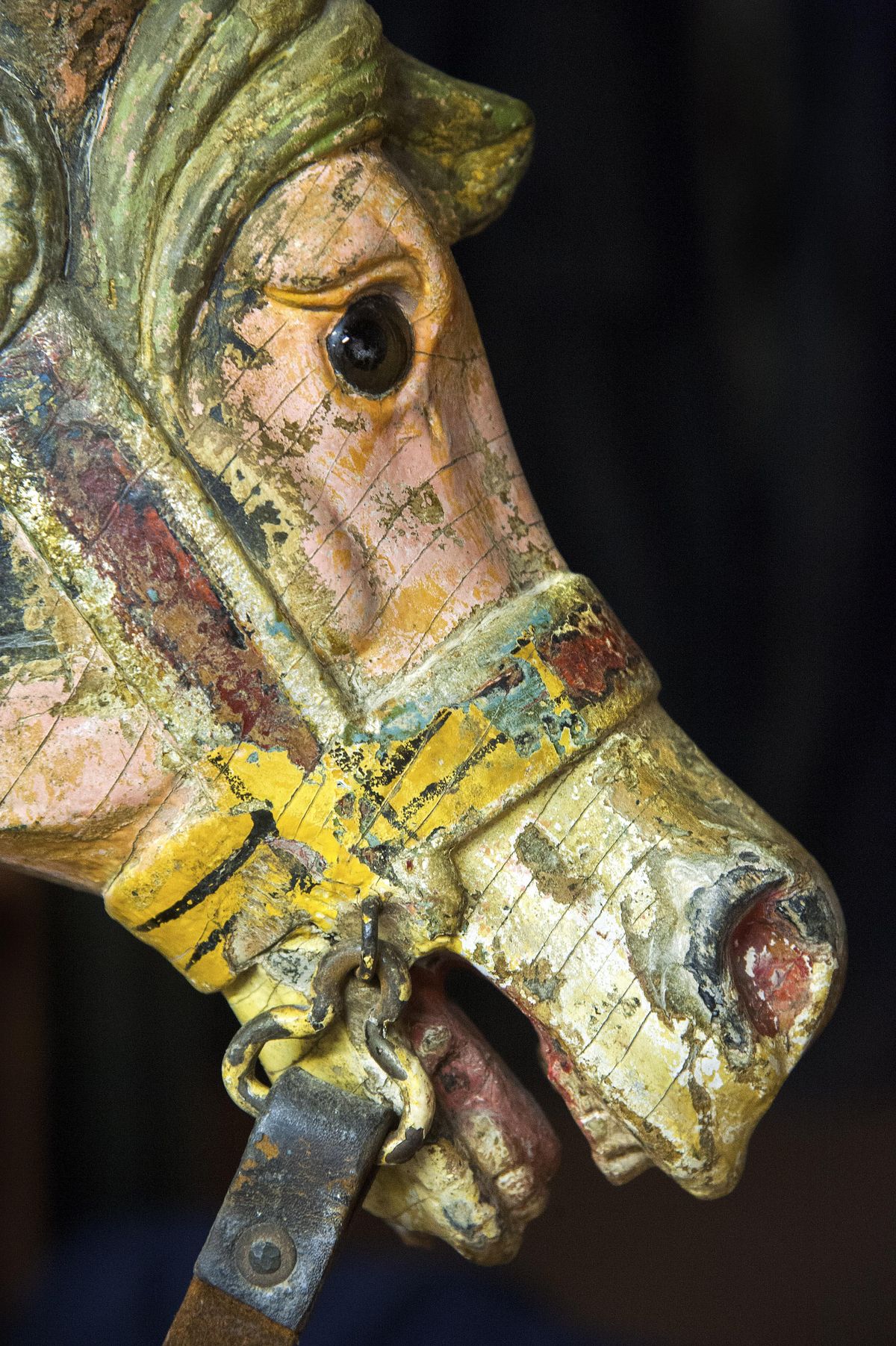Collector donates an early Looff horse to Spokane’s Carrousel

Jack, an early-day Looff carousel horse, has been donated to the city of Spokane and is now part of the carousel collection at Riverfront Park.
Carved out of poplar by Charles Looff, Jack is a lifelike example of the artistry and craftsmanship that went into early carousels.
Jack is believed to have been carved in 1886, which would make him about 20 years older than the figures on Spokane’s historic 1909 Looff Carrousel.
“He has got such a sweet face,” said Bette Largent, the curator of Spokane’s carousel, adding that the horse’s facial expression reminds her of a friendly dog.
Jack is a fixed-in-place prancing horse built for the inside ring of a carousel. Detailed carving of his front leg muscles distinguishes Jack as an early Looff carving, Largent said.
He rode on at least three different carousels at Coney Island, New York, surviving fires on the first two. The horse was part of the Feltman’s Pavilion amusements at New York’s famed entertainment destination.
He was retired in 1961 and sold to a group of carousel collectors.
Jack is named after his former owner, the late Jack Malone, of Silver Spring, Maryland, who was an art teacher. He was the only figure owned by Malone, who also had a large collection of photos and other carousel memorabilia.
Malone left his estate, including Jack, to his executor when he died in 2013. The executor offered to donate Jack to Spokane because the city has one of the few original, intact carousels built by carver and carousel inventor Charles Looff, who emigrated from Denmark to Brooklyn when he was 18.
Spokane voters have approved a series of Riverfront Park improvements over the next several years, including a new home for the city’s Looff Carrousel. That new home is going to include a Looff museum.
Jack could become a leading figure in that museum, said Largent, who has repaired and repainted Spokane’s carousel figures for years.
Largent, who’s also president of the National Carousel Association, said she picked up Jack last fall in the Washington, D.C., area and drove him to Spokane following the association’s convention.
Jack is now housed inside one of the buildings at the Riverfront Park Pavilion.
He is valued at $7,500 to $8,500 despite having a broken left leg and a worn coat of paint from carrying thousands of riders over the years. His paint is chipped with some patches showing his original colors of burgundy and blue-green.
“It’s fascinating to look at him and see what he’s gone through,” Largent said.
Largent said the U.S. had between 4,000 and 5,000 carousels from the late 1800s to the 1960s.
Today, there are only 152 classic wooden carousels, including Spokane’s Looff Carrousel.
Many were lost to fires, floods and the desire of collectors to obtain the carved figures, which are considered American folk art, Largent said.
Spokane’s Looff Carrousel, which originally was part of Natatorium Park at the western end of Boone Avenue along the Spokane River, was placed on the national historic register in 1977. The park was opened by Washington Water Power Co., now Avista Corp., in 1893 to promote trolleys. It was originally called Twickenham Park.
Looff had an initial deal to sell a carousel to Washington Water Power for the park, but a recession caused the company to rescind it.
As a result, Looff shipped the carousel to Spokane as a wedding gift for his daughter, Emma Vogel, and her husband, Louis Vogel, who ran the ride and later bought the park. Their son, Lloyd Vogel, continued its operation until 1968, when the park was closed and redeveloped as a mobile home park, according to the historic register nomination.
Spokane’s carousel has drawn an average of 275,000 riders a year since it opened in Riverfront Park in 1975. Largent said more recent years have seen in excess of 300,000 riders a year.
“This carousel needs to be maintained and kept operating,” she said. “We’ve got to show our history.”